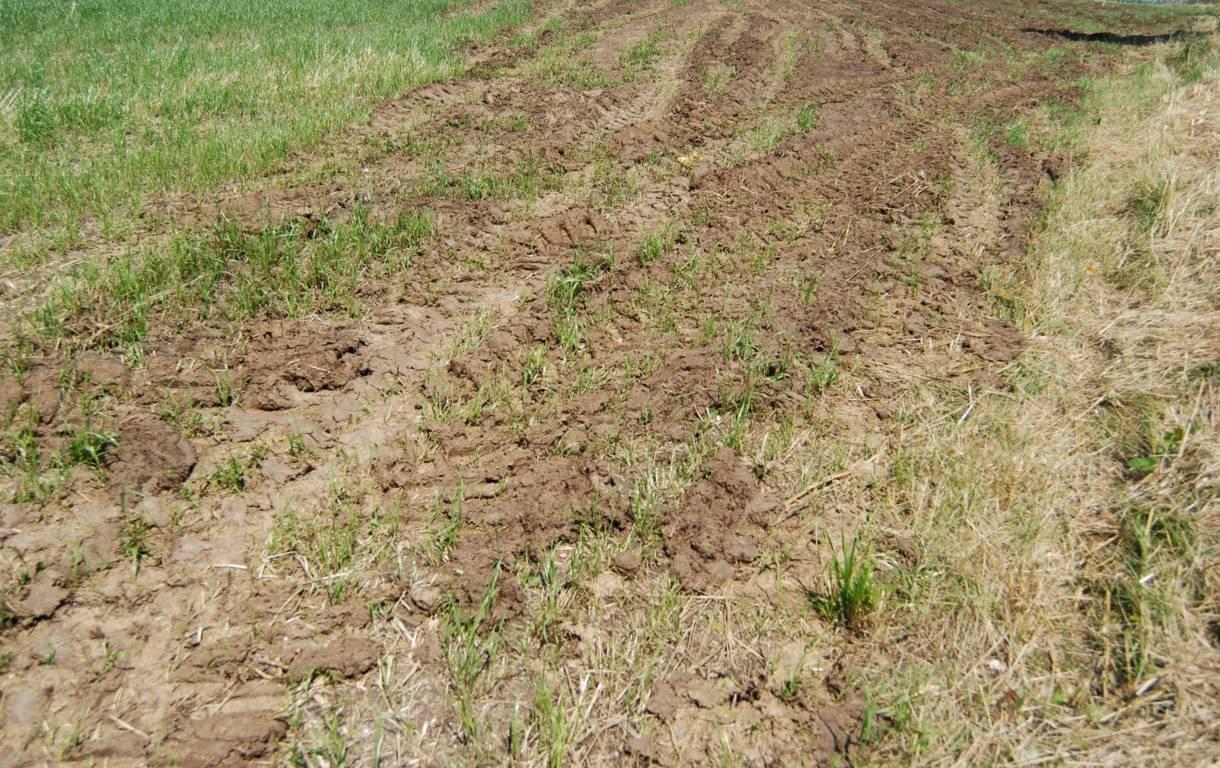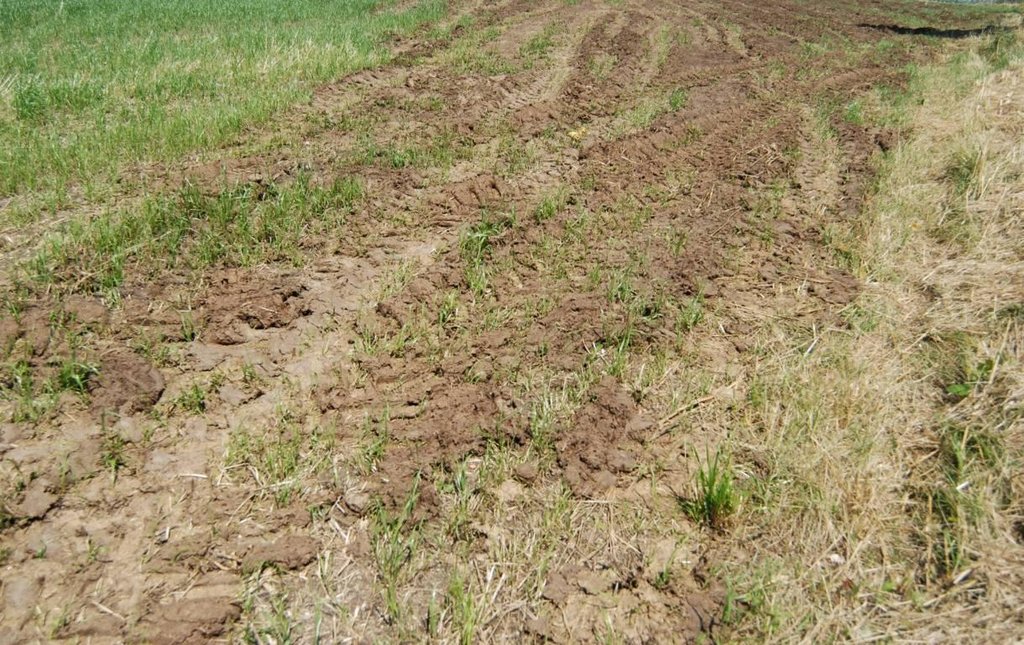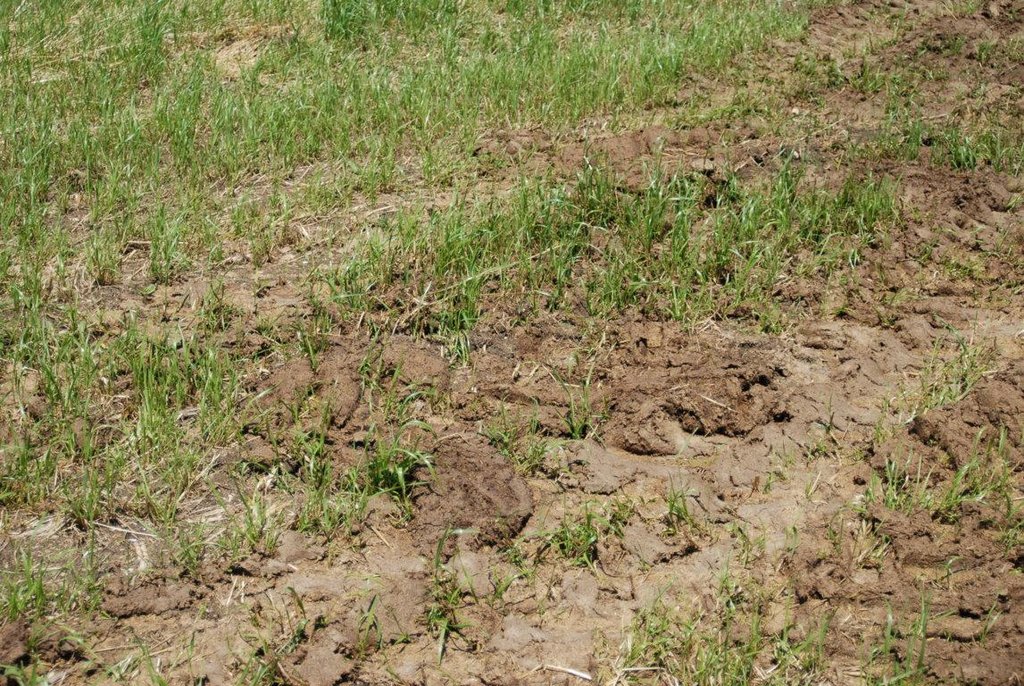Pasture manuring (application of manure from shelter) [Italy]
- Creation:
- Update:
- Compiler: Velia De Paola
- Editor: –
- Reviewers: Fabian Ottiger, Alexandra Gavilano
technologies_1209 - Italy
View sections
Expand all Collapse all1. General information
1.2 Contact details of resource persons and institutions involved in the assessment and documentation of the Technology
SLM specialist:
Salvia Rosanna
University of Basilicata
Italy
SLM specialist:
Quaranta Giovanni
University of Basilicata
Italy
Name of project which facilitated the documentation/ evaluation of the Technology (if relevant)
Catastrophic shifts in drylands (EU-CASCADE) {'additional_translations': {}, 'value': 1085, 'label': 'Name of the institution(s) which facilitated the documentation/ evaluation of the Technology (if relevant)', 'text': 'University of Basilicata - Italy', 'template': 'raw'}1.3 Conditions regarding the use of data documented through WOCAT
The compiler and key resource person(s) accept the conditions regarding the use of data documented through WOCAT:
Yes
2. Description of the SLM Technology
2.1 Short description of the Technology
Definition of the Technology:
Application of manure in valuable pastures to increase grass recover and reduce shrub encroachment
2.2 Detailed description of the Technology
Description:
This is a technique used on animal husbandry farms with either deep litter housing systems (sheep and goat manure) or manure heaps (cattle manure). Manure spreading is carried out twice a year but on different land.
In the case of deep litter housing systems fresh straw is continuously spread over soiled litter in layers. After around six months the deep litter bedding is removed and mechanically spread on pasture lands or arable land.
In the case of cattle farms animal waste is transferred daily to the farm’s manure heap where it is left to decompose for at least a year. Also in this case straw is added for the animals’ comfort and hygiene and is added to the manure heap together with faeces.
Once the manure is ready it is spread on areas of land which can be farmed using mechanical means In the case of arable cropland manure is immediately buried by ploughing, in the case of pasture land it is spread at the beginning of autumn and left on the surface without ploughing (if not occasionally a harrow might be used to break down the manure to increase even distribution and penetration).
Purpose of the Technology: Increase growth of palatable species, increase value of grazing area
Natural / human environment: The technique is an agronomic measure which is applied on meadows, pastures and cropland in an area with a sub-humid climate, moderate scope and shallow clayey soil.
As to the context of production, it is characterised by a medium level of mechanisation (only the most demanding operations are carried out using mechanical means), the production system is essentially mixed, a small part is destined for personal consumption whilst the bulk of production is destined for local markets. The property is predominantly privately owned but also includes some public land, especially in the case of pasture land. Most farms in the area are livestock farms whilst the agricultural component is destined exclusively for private consumption.
2.3 Photos of the Technology
2.5 Country/ region/ locations where the Technology has been applied and which are covered by this assessment
Country:
Italy
Region/ State/ Province:
Basilicata
Further specification of location:
Castelsaraceno
Specify the spread of the Technology:
- evenly spread over an area
If precise area is not known, indicate approximate area covered:
- 0.1-1 km2
2.6 Date of implementation
If precise year is not known, indicate approximate date:
- more than 50 years ago (traditional)
2.7 Introduction of the Technology
Specify how the Technology was introduced:
- as part of a traditional system (> 50 years)
3. Classification of the SLM Technology
3.2 Current land use type(s) where the Technology is applied
Land use mixed within the same land unit:
Yes
Specify mixed land use (crops/ grazing/ trees):
- Agro-pastoralism (incl. integrated crop-livestock)

Cropland
- Annual cropping
Number of growing seasons per year:
- 1
Specify:
Longest growing period in days: 120 Longest growing period from month to month: March to august

Grazing land
Extensive grazing:
- Semi-nomadic pastoralism
- Ranching
Animal type:
- goats
- sheep
- cows
Comments:
Major land use problems (compiler’s opinion): Decrease of value of pastures due to under grazing and shrub encroachment
Major land use problems (land users’ perception): Decrease of value of pastures due to under grazing and shrub encroachment
Semi-nomadism / pastoralism: Shepherds use the area for summer grazing and move downhill in winter
Mixed: (eg agro-pastoralism, silvo-pastoralism): A reduced number of farmers cultivate their field for fodder and pastures
Grazingland comments: Sheep and goats are the most valuable livestock
Type of grazing system comments: Sheep and goats are the most valuable livestock
Livestock density (if relevant): > 100 LU /km2
3.4 Water supply
Comments:
Water supply: rainfed, mixed rainfed - irrigated
3.5 SLM group to which the Technology belongs
- integrated soil fertility management
3.6 SLM measures comprising the Technology

agronomic measures
- A2: Organic matter/ soil fertility
Comments:
Main measures: agronomic measures
Type of agronomic measures: manure / compost / residues
3.7 Main types of land degradation addressed by the Technology

biological degradation
- Bs: quality and species composition/ diversity decline
- Bl: loss of soil life
Comments:
Main type of degradation addressed: Bs: quality and species composition /diversity decline
Secondary types of degradation addressed: Bl: loss of soil life
Main causes of degradation: other human induced causes (specify) (Undergrazing, decrease in land use and land management), labour availability (Between 1970m and 1980 industrial activities in the region pushed people to abandon farming activities)
Secondary causes of degradation: population pressure (The change in the economic activity induced a massive depopulation)
3.8 Prevention, reduction, or restoration of land degradation
Specify the goal of the Technology with regard to land degradation:
- prevent land degradation
4. Technical specifications, implementation activities, inputs, and costs
4.1 Technical drawing of the Technology
Technical specifications (related to technical drawing):
Technical knowledge required for land users: moderate
Secondary technical functions: increase in organic matter, promotion of vegetation species and varieties (quality, eg palatable fodder)
Manure / compost / residues
Material/ species: Litter from stable and organic component
4.2 General information regarding the calculation of inputs and costs
other/ national currency (specify):
euro
If relevant, indicate exchange rate from USD to local currency (e.g. 1 USD = 79.9 Brazilian Real): 1 USD =:
0.74
Indicate average wage cost of hired labour per day:
81.08
4.5 Maintenance/ recurrent activities
| Activity | Timing/ frequency | |
|---|---|---|
| 1. | Emptying of deep litter bedding or manure hap | 2 per year |
| 2. | Spreading of manure on 3 hectares of pasture land | 2 per year |
| 3. | Hire of manure spreader | 2 per year |
4.6 Costs and inputs needed for maintenance/ recurrent activities (per year)
| Specify input | Unit | Quantity | Costs per Unit | Total costs per input | % of costs borne by land users | |
|---|---|---|---|---|---|---|
| Labour | Emptying of deep litter bedding or manure hap | ha | 1.0 | 324.3 | 324.3 | 100.0 |
| Labour | Spreading of manure on 3 hectares of pasture land | ha | 3.0 | 972.9 | 2918.7 | 100.0 |
| Labour | Hire of manure spreader | ha | 1.0 | 283.78 | 283.78 | 100.0 |
| Total costs for maintenance of the Technology | 3526.78 | |||||
| Total costs for maintenance of the Technology in USD | 4765.92 | |||||
Comments:
Machinery/ tools: manure spreader
4.7 Most important factors affecting the costs
Describe the most determinate factors affecting the costs:
Assuming that the production of manure (as described above) happens on farm, the critical point of the application of the technique is the availability of equipment for spreading. The largest farms buy the equipment spending from 35,000 to 40,000 euro depending on the machines’ working capacities. The smaller farms (which represent the vast majority) rent this equipment (from third parties) twice a year at an overall cost of around €70 an hour.
5. Natural and human environment
5.1 Climate
Annual rainfall
- < 250 mm
- 251-500 mm
- 501-750 mm
- 751-1,000 mm
- 1,001-1,500 mm
- 1,501-2,000 mm
- 2,001-3,000 mm
- 3,001-4,000 mm
- > 4,000 mm
Specifications/ comments on rainfall:
68% in winter and 15% in summer
Agro-climatic zone
- sub-humid
Thermal climate class: temperate
5.2 Topography
Slopes on average:
- flat (0-2%)
- gentle (3-5%)
- moderate (6-10%)
- rolling (11-15%)
- hilly (16-30%)
- steep (31-60%)
- very steep (>60%)
Landforms:
- plateau/plains
- ridges
- mountain slopes
- hill slopes
- footslopes
- valley floors
Altitudinal zone:
- 0-100 m a.s.l.
- 101-500 m a.s.l.
- 501-1,000 m a.s.l.
- 1,001-1,500 m a.s.l.
- 1,501-2,000 m a.s.l.
- 2,001-2,500 m a.s.l.
- 2,501-3,000 m a.s.l.
- 3,001-4,000 m a.s.l.
- > 4,000 m a.s.l.
5.3 Soils
Soil depth on average:
- very shallow (0-20 cm)
- shallow (21-50 cm)
- moderately deep (51-80 cm)
- deep (81-120 cm)
- very deep (> 120 cm)
Soil texture (topsoil):
- fine/ heavy (clay)
Topsoil organic matter:
- medium (1-3%)
If available, attach full soil description or specify the available information, e.g. soil type, soil PH/ acidity, Cation Exchange Capacity, nitrogen, salinity etc.
Soil fertility is medium-low
Soil drainage/infiltration is good
Soil water storage capacity is medium
5.4 Water availability and quality
Ground water table:
5-50 m
Availability of surface water:
medium
Water quality (untreated):
good drinking water
Comments and further specifications on water quality and quantity:
Availability of surface water is medium (minimum during month of September and October)
5.5 Biodiversity
Species diversity:
- medium
5.6 Characteristics of land users applying the Technology
Market orientation of production system:
- commercial/ market
Off-farm income:
- > 50% of all income
Relative level of wealth:
- average
Individuals or groups:
- individual/ household
Gender:
- men
Indicate other relevant characteristics of the land users:
Land users applying the Technology are mainly common / average land users
Difference in the involvement of women and men: Active farmers are present only males; women are not actively involved in land management.
Population density: 10-50 persons/km2
Annual population growth: negative; 2%
90% of the land users are average wealthy.
10% of the land users are poor.
Off-farm income specification: Most of the off farm income derives from public sector, i.e. Municipality, Mountain Community, Region and other public bodies. Very few farmer members run local shops or handcraft.
5.7 Average area of land used by land users applying the Technology
- < 0.5 ha
- 0.5-1 ha
- 1-2 ha
- 2-5 ha
- 5-15 ha
- 15-50 ha
- 50-100 ha
- 100-500 ha
- 500-1,000 ha
- 1,000-10,000 ha
- > 10,000 ha
Is this considered small-, medium- or large-scale (referring to local context)?
- small-scale
Comments:
15-50 ha (Considering communal land used by farmers)
5.8 Land ownership, land use rights, and water use rights
Land ownership:
- communal/ village
- individual, titled
Land use rights:
- communal (organized)
- individual
5.9 Access to services and infrastructure
health:
- poor
- moderate
- good
education:
- poor
- moderate
- good
technical assistance:
- poor
- moderate
- good
employment (e.g. off-farm):
- poor
- moderate
- good
markets:
- poor
- moderate
- good
energy:
- poor
- moderate
- good
roads and transport:
- poor
- moderate
- good
drinking water and sanitation:
- poor
- moderate
- good
financial services:
- poor
- moderate
- good
6. Impacts and concluding statements
6.1 On-site impacts the Technology has shown
Socio-economic impacts
Production
fodder production
Quantity before SLM:
8t/ha
Quantity after SLM:
11t/ha
fodder quality
Comments/ specify:
The quality of the fodder increases due to the increase of protein content.
Water availability and quality
demand for irrigation water
Income and costs
farm income
Comments/ specify:
Net return from this activity increases due to yield increases.
Socio-cultural impacts
health situation
conflict mitigation
Improved livelihoods and human well-being
Ecological impacts
Water cycle/ runoff
surface runoff
Soil
soil moisture
soil loss
soil crusting/ sealing
soil compaction
nutrient cycling/ recharge
soil organic matter/ below ground C
Biodiversity: vegetation, animals
biomass/ above ground C
plant diversity
beneficial species
habitat diversity
pest/ disease control
Climate and disaster risk reduction
emission of carbon and greenhouse gases
Other ecological impacts
Benefits from soil ecology
Comments/ specify:
The application of manure increases the soil organic matter content. As The application of manure increases the soil organic matter content. As well known the increases in organic matter content turns in important benefits from the soil ecology.
6.2 Off-site impacts the Technology has shown
reliable and stable stream flows in dry season
Comments/ specify:
The application of manure due to its beneficial effects on soil parameters, allows to keep grass and crops healty along the year so protecting soil. Poor soils , without manure application, can not sustaine grasses all over the year making it at erosion
downstream flooding
Comments/ specify:
The application of manure due to its beneficial effects on soil parameters, allows to keep grass and crops healty along the year so protecting soil. Poor soils , without manure application, can not sustaine grasses all over the year making it at erosion
buffering/ filtering capacity
Comments/ specify:
The application of manure due to its beneficial effects on soil parameters, allows to keep grass and crops healty along the year so protecting soil. Poor soils , without manure application, can not sustaine grasses all over the year making it at erosion
6.3 Exposure and sensitivity of the Technology to gradual climate change and climate-related extremes/ disasters (as perceived by land users)
Gradual climate change
Gradual climate change
| Season | increase or decrease | How does the Technology cope with it? | |
|---|---|---|---|
| annual temperature | increase | well |
Climate-related extremes (disasters)
Meteorological disasters
| How does the Technology cope with it? | |
|---|---|
| local rainstorm | well |
| local windstorm | well |
Climatological disasters
| How does the Technology cope with it? | |
|---|---|
| drought | well |
Hydrological disasters
| How does the Technology cope with it? | |
|---|---|
| general (river) flood | well |
Other climate-related consequences
Other climate-related consequences
| How does the Technology cope with it? | |
|---|---|
| reduced growing period | well |
6.4 Cost-benefit analysis
How do the benefits compare with the maintenance/ recurrent costs (from land users' perspective)?
Short-term returns:
neutral/ balanced
Long-term returns:
neutral/ balanced
6.5 Adoption of the Technology
Of all those who have adopted the Technology, how many did so spontaneously, i.e. without receiving any material incentives/ payments?
- 91-100%
Comments:
10% of land user families have adopted the Technology with external material support
Comments on acceptance with external material support: Part of the implementing farms have adopted the technology thanks to support in buying ad hoc machinery
90% of land user families have adopted the Technology without any external material support
There is a little trend towards spontaneous adoption of the Technology
Comments on adoption trend: High cost of fuel are reducing the rate of adoption given the high machinery requirements
6.7 Strengths/ advantages/ opportunities of the Technology
| Strengths/ advantages/ opportunities in the land user’s view |
|---|
|
It’s the only natural way to fertilize pasture and croplands. This avoids the use of chemical fertilizers and external inputs. This also provides great beneficial effects on the milk/meat quality through better grass. How can they be sustained / enhanced? Providing subsides both to machinery and organic production |
| Strengths/ advantages/ opportunities in the compiler’s or other key resource person’s view |
|---|
|
The farms try to concentrate their activities and so they try to improve local (close by) pastureland. The technology increases the grass productivity and so helping farms to reduce time of grazing. How can they be sustained / enhanced? Supporting ad hoc machinery and equipment. |
6.8 Weaknesses/ disadvantages/ risks of the Technology and ways of overcoming them
| Weaknesses/ disadvantages/ risks in the land user’s view | How can they be overcome? |
|---|---|
| This is considered as a heavy work (mainly dirty). The use of machinery is the only way to implement it | No way |
| Weaknesses/ disadvantages/ risks in the compiler’s or other key resource person’s view | How can they be overcome? |
|---|---|
| The technology is difficult to apply on very steep slope lands | No way |
Links and modules
Expand all Collapse allLinks
No links
Modules
No modules




